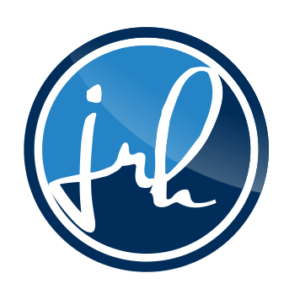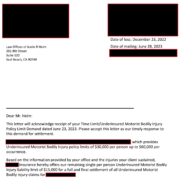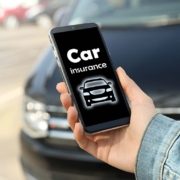How to determine what insurance covers a car accident claim.
Determine what car insurance covers a car accident claim! Do you have a personal injury case? Were you in a car accident with uninsured or underinsured motorists?
Below we cover some of the many types of car insurance coverage which may apply.
To determine what insurance covers a car accident claim, you must gather a copy of each person’s car insurance policy.
When you are involved in an auto accident, you must make sure to go through your complete California accident checklist. As part of your checklist, you should make sure to take a picture of the drivers license, vehicle registration, and car insurance for everyone involved.
According to Cal. Veh. Code § 16025 (a)(2), every driver involved in a auto accident shall provided “evidence of financial responsibility.”
Unfortunately, evidence of financial responsibility usually involves nothing more than a basic car insurance card. Furthermore, a car insurance card often only states the name of the insured, name of the insurer, policy number, and policy period.
California does not obligate a party to disclose any details pertaining to their insurance coverage prior to commencement of a lawsuit.
Insurance coverage details are considered to be confidential between an insured and an insurer. See Griffith v. State Farm Mut. Auto Ins. Co. (1991) 230 Cal.App.3d 59.
Before a lawsuit is filed, an insurer must only request permission from their insured to disclose policy limits. See Boicourt v. Amex Assurance Co. (2000) 78 Cal.App.4th 1391.
However, even if another person does decide to disclose the details of their California vehicle insurance coverages to you, policies of car insurance in California can be confusing. So, how do you know if there is car insurance coverage for a claim?
Once you have a copy of the at-fault driver’s car insurance, determine what insurance covers your car accident claim.
What Insurance Coverage Pays for Personal Injuries and Car Repair?
California automotive liability insurance is a legally required coverage that provides financial protection for an at-fault driver. Liability coverage is the portion of insurance that the person injured by an at-fault driver can recover from.
The California automotive liability insurance requirements are often referred to as “15/30/5,” which represent the minimum coverage limits:
- Bodily Injury Liability per person: $15,000 – This coverage pays for medical expenses, lost wages, and other damages for each person injured in an accident that you are responsible for, up to a limit of $15,000 per person.
- Bodily Injury Liability per occurence: $30,000 – This coverage pays for the total medical expenses, lost wages, and other damages for all the people injured in an accident that you are responsible for, up to a limit of $30,000 per accident.
- Property Damage Liability: $5,000 – This coverage pays for the repair or replacement of another person’s property (usually their vehicle) when you are at fault in an accident, up to a limit of $5,000.
On January 1, 2025, California’s minimum automotive liability coverage limits will rise to $30,000 per person / $60,000 per occurrence / $15,000 for property damage.
If any person injured was in a car (regardless of fault) that also carried medical payments coverage, or “MedPay,” then they may have additional coverage. “MedPay,” is an optional type of auto insurance coverage that helps pay for medical expenses resulting from an accident, regardless of who is at fault. Since this is purely optional coverage, there generally are no minimum or maximum limits offered.
What if the At-Fault Driver Doesn’t Have Enough Insurance to Cover my Personal Injuries?
If an at-fault driver causes bodily injuries that are worth an amount in excess of their liability limits, the injured party may be able to recover the additional damages from their own insurance coverage.
Underinsured motorist coverage (UIM) is an optional auto insurance coverage that provides financial protection when you are involved in an accident with a driver who has insufficient insurance to cover your damages. UIM coverage helps pay for medical expenses, lost wages, and property damage when the at-fault driver’s insurance is inadequate.
UIM coverage is typically divided into two categories – underinsured motorist bodily injury (UIMBI) and underinsured motorist property damage (UIMPD). UIMBI covers medical expenses, lost wages, and other injury-related costs, while UIMPD covers damage to your vehicle and other property.
To file a UIM claim, you’ll first need to exhaust the at-fault driver’s liability coverage. Once their coverage limits have been reached, a claim can be filed with the “First-Party” insurance company for the remaining damages, up to the UIM coverage limits.
A more thorough explanation of Uninsured Motorist Insurance (UM) and Underinsured Motorist (UIM) benefits can be found here.
What Insurance Coverage Handles Property Damage for the At-Fault Driver’s Car?
Typically, automotive collision insurance provides coverage for the replacement or repair of vehicle. Even if the claimant is the at-fault driver in a car accident.
The California Insurance Code defines “Automobile collision coverage” as, “includes all coverage of loss or damage to an automobile insured under the policy resulting from collision or upset. See Ca. Ins. Code § 660 (d).
In simpler terms, collision insurance is a type of auto insurance coverage specifically designed to provide financial protection for a policyholder’s vehicle in the event of a collision or accident. Collision insurance covers the cost of repairing or replacing the insured vehicle if it is damaged due to a collision with another vehicle, object, or even if it rolls over.
However, pursuant to Ca. Code Ins. § 11580.26, collision coverage is an optional. Collision insurance can be removed from a policy.
An at-fault driver/owner has not purchased collision coverage may be left holding the bill.
If You Have Been Wrongfully Injured, Contact a Local Personal Injury Lawyer Right Away!
If you have been injured as a result of a car accident, call a California car accident lawyer right away. Make sure that you gather the contact information from as many witnesses as you can find.
No one article can cover everything that people should know after a personal injury. Additionally, personal injury law presents unique legal challenges. It is important to consult with a lawyer when trying to determine what insurance covers a car accident claim.
We recommend that you contact a personal injury lawyer before speaking to an insurance adjuster, or filing a claim. Filing an insurance claim for personal injuries without consulting an attorney, could hurt your case. An adjuster may later attempt to use your statements against you.
There are many local Long Beach, Seal Beach, and Huntington Beach personal injury lawyers and car accident attorneys. Lawyers who regularly practice in this field of law should be able to help. Moreover, they will likely offer you a free consultation.
Don’t let an insurance company lowball your demand for reimbursement of medical expenses, lost wages, or pain and suffering. Ensure that you receive full justice for your insurance claims!
Legal Disclaimers
The information contained in this post is for general information purposes only. Nothing on this post, or website, should be taken as legal advice for any individual or case situation. This information is not intended to create, and receipt or viewing does not constitute an attorney-client relationship.
Contact us If you have lost a loved one or have pain and suffering from a personal injury. For more information, visit our car accidents page and slip and fall accidents page. For a free consultation, please reach out to our attorneys to arrange a time to discuss your case.
All you have to do is hit the big blue button labeled Contact Us at the top of this page!

Get In Touch
Seal Beach, CA 90740
(T) 760.658.9075
(F) 760.657.2983
Info@HeimInjuryLaw.com
Request a Consultation

 Law Offices of Justin R. Heim APC
Law Offices of Justin R. Heim APC Law Offices of Justin R. Heim APC
Law Offices of Justin R. Heim APC